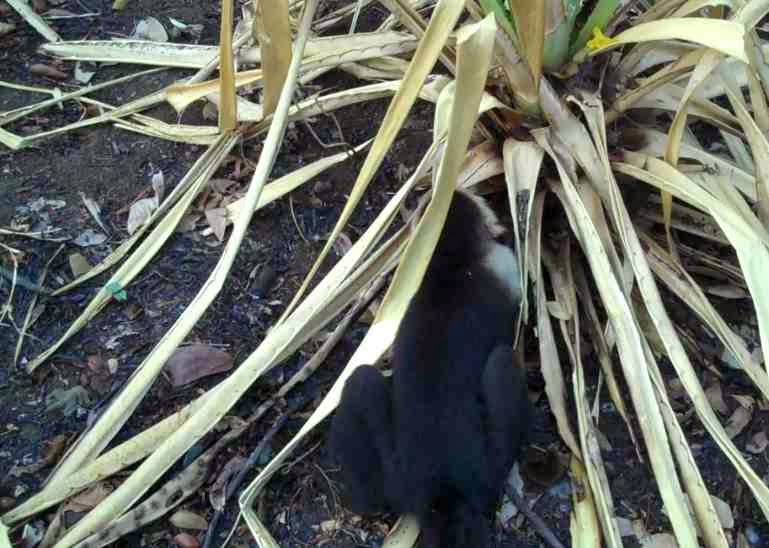Fire ravages the study site
Forest fires are always a problem in tropical dry forest, but this year our study site was hit particularly hard at the end of the 2013 dry season, when a fire burned the Las Mesas sector of the field site, part of the Pelon forests, and the watershed portion of the reserve that was formerly the San Ramon de Bagaces Agro-ecological Reserve. Our preliminary assessment of the damage indicates that three groups had >70% of their range destroyed, 3 had <10% of their ranges destroyed, and 4 groups had 20-40% of their home ranges burned.
Pitufo forages for bromeliad shoots
The most affected group was Newman’s group, which had its entire home range burned. It was amazing to observe how they coped with such a drastic change. At first, they foraged on the charred ground for the burned remains of last year’s fruits, crunching loudly on moths that they normally never eat and getting chased off of farms they normally never visit, where they braved the dogs and rock-throwing local people to try to access much-needed fruit trees. Once the burned bromeliad patches began to regenerate, sending out new growth, the monkeys specialized on eating these bitter shoots.
The Costa Rican park service has requested that we more formally study the effects of fire on the forest and on the monkey population in particular, so that they can use this information to develop management plans. We would like to study the impact of the fire on the capuchins’ ranging patterns, their diet, their metabolism, and their ability to reproduce. Their resilience is remarkable, and it will be interesting to document the strategies individuals and social groups use to compensate for dramatic changes in food availability. We are currently collecting pilot data and writing new grant proposals in order to conduct a long-term study on how capuchin foraging strategies change in response to ecological stressors like forest fires.



